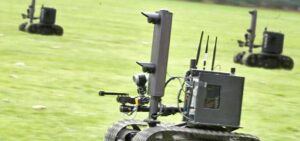Blog archive
-

Can Innovative School Models Improve Outcomes for Youth Who Are Currently Off Track to Graduate?
Despite rising high school graduation rates, 4.9 million young adults between the ages of 16 and 24—or 12.3 percent of U.S. youth—were neither working nor in school in 2015. There is a clear and pressing need to support students before they drop out of high school, and to reengage those who are no longer enrolled.…
-

Managing Information Overload with Text Analytics
No scientist or researcher can keep current with the vast number of potentially relevant journal articles and technical documents published each year in a given field. As with many problems involving overwhelming amounts of information, computers and advanced machine learning/artificial intelligence tools offer a potential solution. Text analytics can be applied to entire document sets…
-

Arecibo Observatory Active in Puerto Rico Recovery
The Arecibo Observatory has withstood the wrath of Hurricane Maria. I am happy to say that all the staff members and their families are safe and accounted for. The staff has spent the past week performing cleanup activities as well as inspecting the physical structures and the research equipment. The Observatory sustained less damage than…
-

New Cyberlearning Research Publication Highlights Possibilities for Enhanced Learning with Technology
In the field of education research, a core focus has been the impact of digital learning technologies in K-12 and higher education settings – and SRI’s Education Division has been at the forefront of much of that research.
-

Early Lessons Launching Open Education Resource Degrees in Community Colleges
SRI recently released our first report on the Open Education Resource (OER) Degree Initiative, an effort led by Achieving the Dream (ATD), a network of more than 200 community colleges, to boost college access and student success. The program supports the redesign of courses needed for a degree using OER materials in place of proprietary…
-

The Mad Science behind Autonomy and AI in the Military
While the U.S. military is laser focused on day-to-day operations, it always has an eye on the future. More specifically, on how to encourage innovation and leverage technologies, products and approaches that can better ensure mission success. This past spring I had the pleasure of speaking at the Mad Scientist Conference on Robotics, Artificial Intelligence…
-

Promising Model for Supporting Beginning Teachers
Imagine being a new teacher, thrust into your first classroom and given sole responsibility for managing the students, planning and executing the lessons, and assessing student learning. Imagine your first teaching experience being in a school with high teacher turnover, high student mobility, and limited resources to support you, working with students whose needs—financial and…
-

Can Digital Learning Technologies Help Address the Needs of Low-Skilled Adults?
It is widely known that the U.S. is facing a shortage of skilled labor. According to a report released by the Organization for Economic Cooperation and Development, more than 36 million adults in the U.S. do not have the basic literacy and math skills needed for entry-level jobs – that’s about 1 in 6 adults.…
-

Manufacturing Next-generation Robotic Manipulation
Every April, National Robotics Week fuels a heightened awareness around robotics, its impact on society, and its growing importance in a wide variety of fields and applications. Robotics, however, never seems to achieve its hyped potential from its beginnings in industrial applications, when the benefits of fast, precise, repetitive manipulation in manufacturing were a significant driver for…
-

Insights from Linked Learning into Equitable Career Pathway Implementation
In SRI International’s new brief, Access and Equity in Linked Learning, we share what we’ve learned about the promise and challenges of achieving equitable, career-themed pathways from our 7-year study of Linked Learning. Linked Learning is an approach to transforming the high school experience by creating academically rigorous, career-themed pathways in either stand-alone small schools or academies within large…
-

Autonomy: from Shakey to the Future
The Shakey robot, built at SRI International in the late 1960’s and early 1970’s, was the world’s first mobile robot to perceive its environment, figure out how to execute goals given by the user, and then perform actions. Artificial intelligence (AI) researchers today are still working on these problems, in ever more complex environments and…
-

Preventing Expulsions in Early Childhood and Supporting All Children’s Success
Researchers at SRI Education have created an interactive guide with set of recommended policies and practices to support early education program leaders in reducing and preventing suspensions and expulsions.